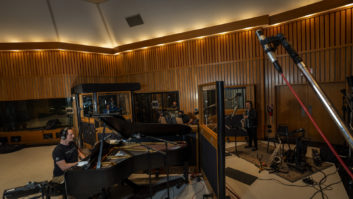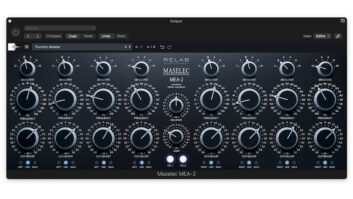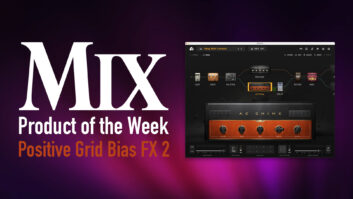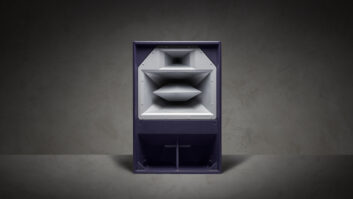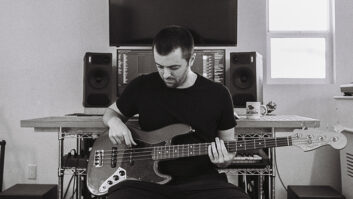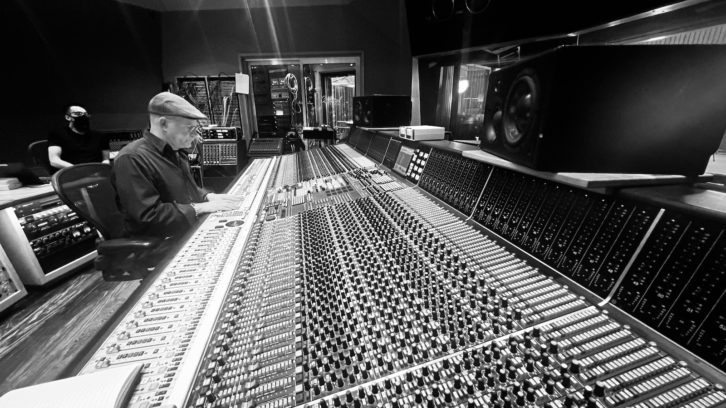
In Part 2 of our look at the live-to-two-track recording of ‘Blues & Hues New York,’ we ironically travel to Capitol Studios in Los Angeles. Don’t miss Part 1!
SETTING UP THE MUSICIANS
“Based on their given output, I will place [the musicians] in a different position in the room because I know I will get leakage in the piano mics, and I either want that leakage or I don’t,” Germain explains. “Depending on whether it’s good leakage or bad leakage, I will move them closer or further.
“If everybody is distinct and separated, I lose some of that,” he continues. “So I will take the horn, generally, and the singer sometimes, and put them in the room with the piano because then they are going to spill into the piano like they normally would, and you would hear them like you would if you were sitting right in front of them.”
At the Capitol session, in addition to Lamb, Erskine and Anacron, the group of stellar players—Edwin Livingston on bass, Dano Torimiro, keyboards and Justin Klunk, saxophone—rehearsed the music and played it through a few times. The composition included a mashup of Paul Robeson’s “Let My People Go,” and Duke Ellington’s “Come Sunday.” As Weber explains, Lamb arranges a song that inspires him, then crafts an original tune from that inspiration, intertwining the two versions to create a third song.
“In the case of Blues & Hues, we’re spotlighting Duke Ellington and his ability to transcend racism through his popularity,” Lamb explains, pointing out that Anacron’s poignant rap on racism makes several Ellington references.
“Ellington was able to get black people into the Cotton Club, where they weren’t allowed before. He was making [the club] so much money that he said, ‘Look, you have me there, so you let my friends in or I’m just not there anymore.’ So they made a money choice.”
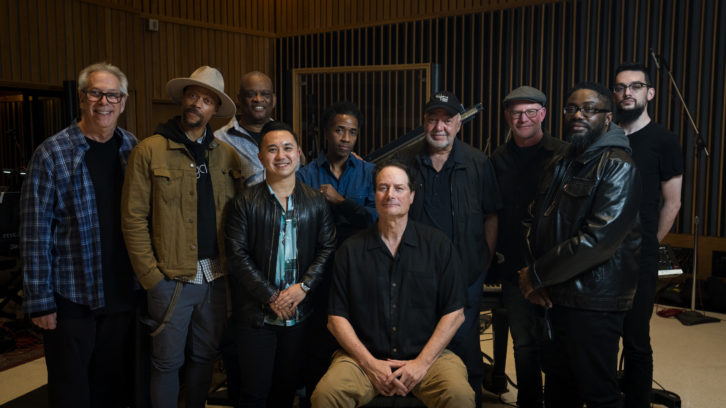
Once rehearsed, Germain had the responsibility of capturing the best technical, as well as emotional, performance. He started by recording the passes and mixing them on the spot at Studio A’s 72-input Neve 88RS console.
“I used an LA2A across the bass,” Germain adds. “I used Summit TLA100s across Anacron, as well as the two sax mics, just lightly touching. On the stereo bus, I had a Neve 33609. I’m not doing much with it. That’s it. I’m pretty minimalist because the more stuff I put in the signal chain, the more stuff that can go wrong.”
Germain says the virtues of live-to-two-track recording come out in the excitement of the moment, followed by the reward that comes with the finished product. And although the pre-production, scheduling, preparation, and whatnot can take as much as a year, when it comes to the recording, everything is usually done in one day, mastered the next day, then released the following month. In this case, it was finished on a late- February Saturday, mastered on a Monday and is scheduled to be released this month.
Weber, meanwhile, appreciates that live-to-two-track recording is affordable, emotionally satisfying and sonically superior.
“We’ve eliminated the recording onto a digital audio workstation like Pro Tools, we’ve eliminated all of the mixing, so it goes just to the final stage. You can hear the difference,” Weber insists. “The immediacy of a live-to-two-track project is exponentially superior to a finely mixed multitrack effort. The players may even play differently, knowing they can’t fix it. There is that intangible quality to the live performance.”
Next stop…Blues & Hues Chicago.

